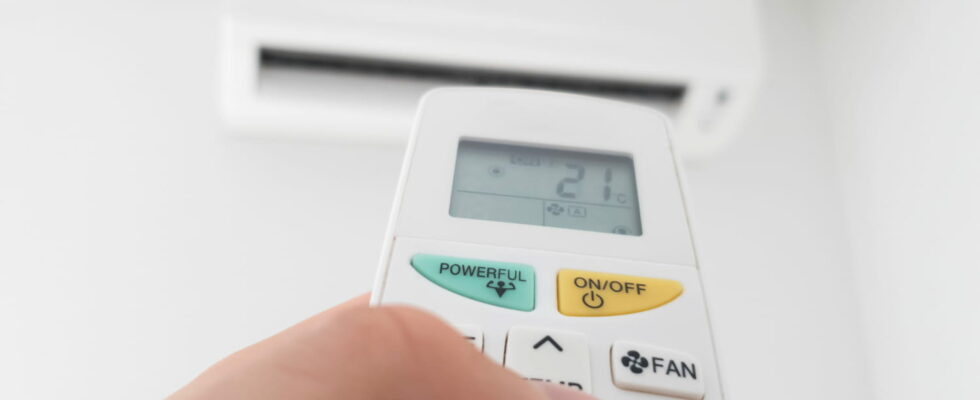The air conditioning is very pleasant in summer, especially during heatwaves. It is still necessary to use it carefully, avoiding an operating mode which does more harm than good in the event of high heat.
With the arrival of summer and high temperatures, air conditioning is a valuable ally in facing the heat. However, many make a common mistake in its use. It is therefore important to understand the different functions of your air conditioner to maximize its efficiency and your comfort.
In fact, an air conditioner can operate in different modes. The main ones are the cold mode (Cool mode in English) and the dry mode (Dry in English). If they seem to offer similar results at first glance, their functions differ significantly. The cold mode, usually represented by a snowflake icon on the remote control or on the device, lowers the temperature of the air by passing it through cooled coils. On the other hand, the dry mode, symbolized by a drop of water, does not aim to reduce the temperature significantly, but simply to decrease the humidity level of the air.
Dry mode is particularly useful when the ambient air is heavy with humidity, which may be the case during periods of rain or in naturally humid environments. This mode works by drawing humid air from the room, passing it through cold coils where the moisture condenses into water before being exhausted. This makes the air drier without cooling it excessively.
However, in the middle of summer, when temperatures rise, dry mode is not the most effective option. The real enemy during heat waves is high temperature, not humidity. By activating the cool mode of your air conditioner, you can effectively reduce the room temperature, making your living space more comfortable.
Another important aspect to consider is the impact of humidity levels on our well-being. Excess humidity in a room can cause a feeling of clamminess and discomfort. Additionally, it encourages the growth of mold and fungus, which can lead to health problems like allergies and respiratory illnesses. It is therefore crucial to maintain an optimal humidity level, between 45% and 60%.
To activate dry mode on most modern air conditioners, simply select the “DRY” option on the remote control. If your unit does not have this feature, simply switching to cooling mode can also help reduce humidity indirectly, as the cooling process causes moisture in the air to condense.
To combat excessive humidity, dry mode can be an effective temporary solution, especially in conditions where the outside temperature is not too high. However, in summer, when the heat is overwhelming, it is better to favor the cold mode. If you live in an area where humidity is a major issue, consider using a dedicated dehumidifier to complement your air conditioner for better humidity management.
